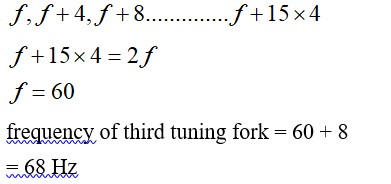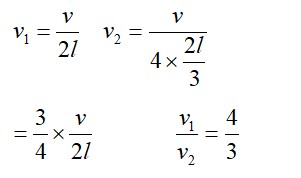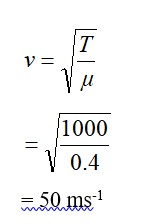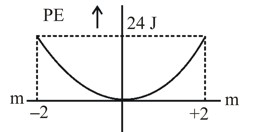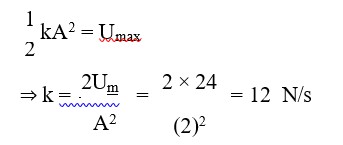Given below are some functions of x and t to represent the displacement of an elastic wave.
(a) y = 5 cos (4x ) sin (20t)
(b) y = 4 sin (5x – t/2) + 3 cos (5x – t/2)
(c) y = 10 cos [(252 – 250) πt ] cos [(252+250)πt ]
(d) y = 100 cos (100πt + 0.5x )
State which of these represent
(a) A travelling wave along –x direction
(b) A stationary wave
(c) Beats
(d) A travelling wave along +x direction.
Given reasons for your answers.
Given below are some functions of x and t to represent the displacement of an elastic wave.
(a) y = 5 cos (4x ) sin (20t)
(b) y = 4 sin (5x – t/2) + 3 cos (5x – t/2)
(c) y = 10 cos [(252 – 250) πt ] cos [(252+250)πt ]
(d) y = 100 cos (100πt + 0.5x )
State which of these represent
(a) A travelling wave along –x direction
(b) A stationary wave
(c) Beats
(d) A travelling wave along +x direction.
Given reasons for your answers.
-
1 Answer
-
This is a long answer type question as classified in NCERT Exemplar
(a) The equation y = 100 cos (100πt + 0.5x ) is representing a travelling wave along x-direction
(b) The equation y = 5 cos (4x ) sin (20t) represents a stationary wave, because it contains sin cos terms ., combinations of two progressive waves.
(c) The equation y = 10 cos [ (252 – 250) πt ] cos [ (252+250)πt ] involving sum and difference of two near by frequencies 252 and 250 have this equation represents beats formation.
(d) As the equation y = y = 4 sin (5x – t/2) + 3 cos (5x – t/2) involves negative sign with x, have if represents a trav
...more
Similar Questions for you
The acceleration of wave is g/2. Its speed increases as it moves up. So answer is (2)
Taking an Exam? Selecting a College?
Get authentic answers from experts, students and alumni that you won't find anywhere else
Sign Up on ShikshaOn Shiksha, get access to
- 65k Colleges
- 1.2k Exams
- 678k Reviews
- 1800k Answers

